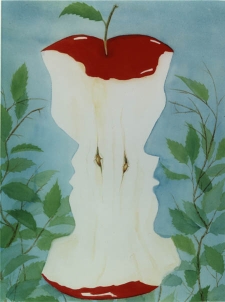Topic
Topic
 Much work has been done on the nature of perceptual representation. Familiar debates surround questions about the content of perceptual experience, such as:
Much work has been done on the nature of perceptual representation. Familiar debates surround questions about the content of perceptual experience, such as:
- Is the content wide or narrow?
- Is the content conceptual or non-conceptual?
- What is the relation between content and phenomenal character?
However, a fundamental question that has not received a great deal of attention is what are the admissible contents of perceptual experience? Equivalently, what contents do perceptual experiences have? Or, which objects and properties are represented in perceptual experience?
Perceptual experiences frequently give rise to beliefs. Both beliefs and perceptual experiences have contents, but the content of beliefs based on perception do not always simply mirror the contents of the perceptual experiences on which they are based. This is because often such beliefs draw not only on the perceptual experiences but also on background knowledge and beliefs.
For example, one might come to beleive that a person is in a room on the basis of one's perceptual experience of music emanating from it. While one's belief has content pertaining to a person, one's perceptual experience on which this belief is based plausibly does not. One might have formed the belief in question on the basis of the perceptual experience together with one's background belief that if there is music on in the room then a person is in the room. This example shows that we require a method of determining which contents experiences have that is different from simply determining the content of our beliefs based on perception. Further, even if it is the case that for every perceptual experience one has one will have a belief that does mirror its content, the question then arises of how we determine which are the mirroring beliefs. It might be thought that the mirroring beliefs are the ones based only on perception and not also on other beliefs, but again the question arises how we establish which ones those are. One problem here is that if a belief is partly based on another belief it need not be so on account of any conscious act of inference, or the like, that takes place. Thus, there might not be any first person introspective method that allows us to identify such beliefs. How else might it be done?
Answering the question as to what the admissible contents are requires answering a number of other questions. By which method or methods can we determine what the admissible contents of experience are? Is there a distinction between what can be perceived directly and what can be perceived indirectly? Is there a distinction between different levels of content that experience has and what are those levels? Do all states with content fall neatly into either the belief or experience category or is there a continuum from states that are more like perceptual experiences to states that are more like belief?
As ever in philosophy, it is visual experiences that have received most attention in the literature. It is commonly thought that visual experiences have content concerning shape and colour. However, there is debate about even the representation of these properties. For example, there is disagreement about whether colour properties should be identified with any physical properties of mind independent objects and whether the colour properties represented in experience are just those properties. Further, there has been some debate about whether the shape properties that experience represents are two-dimensional or three-dimensional or about exactly which aspects of depth they represent. Beyond the representation of shape and colour, there is debate about whether experiential content includes:
- objects
- surfaces that are not, strictly speaking, in view
- only abstract entities
- indexicals
- only content related to the appearance of things
- every sort of natural kind, such as water and tiger
- causal relations
The conference seeks to bring together prominent writers on perception and perceptual experience in a concerted attempt to systematically explore these issues and their ramifications.
Bibliography
Barnes, W. H. F. (1945) "The Myth of Sense-Data", Proceedings of the Aristotelian Society, 45, pp. 89-118. Reprinted in R. J. Swartz (ed.) Perceiving, Sensing and Knowing, Berkeley: University of California Press, 1965.Kelly, S. D. (2001) "Demonstrative concepts and experience", Philosophical Review, 110 (3), pp. 397-420.
Kelly, S. D. (1999) "What do we see (when we do)", Philosophical Topics, 27 (2), pp. 107-128.
Kriegel, U. (2006) "The Phenomenologically Manifest", Phenomenology and the Cognitive Sciences, 5, available at uriahkriegel.com/?Papers.
Matthen, M. (2005) Seeing, Doing, and Knowing: A Philosophical Theory of Sense Perception, Oxford: Oxford University Press.
Millar, A. (1991) "Concepts, Experience and Inference", Mind, 100, pp. 495-505.
Noe, A. (2004) Action in Perception, Cambridge M.A.: MIT Press.
Prinz, J. (2005) "Beyond Appearances: The Content of Perception and Sensation" T. S. Gendler and J. Hawthorne (eds.) Perceptual Experience, Oxford: Oxford University Press.
Robinson, H. (1994) Perception, London: Routledge.
Siegel, S (2006) "Which Properties are Represented in Perception?" in T. S. Gendler and J. Hawthorne (eds.) Perceptual Experience, Oxford: Oxford University Press.
Siegel, S. (forthcoming) "The Phenomenology of Efficacy", Philosophical Topics, available online at: www.people.fas.harvard.edu/~ssiegel/papers/papers.html
Siewert, C. P. (1998) The Significance of Consciousness, Princeton NJ: Princeton University Press.
Smith, A. D. (2002) The Problem of Perception, Cambridge M.A.: Harvard University Press.
Tye, M. (1995) Ten Problems of Consciousness, Cambridge M.A.: MIT Press.
Tye, M. (2000) Color, Consciousness and Content, Cambridge M.A.: MIT Press.

